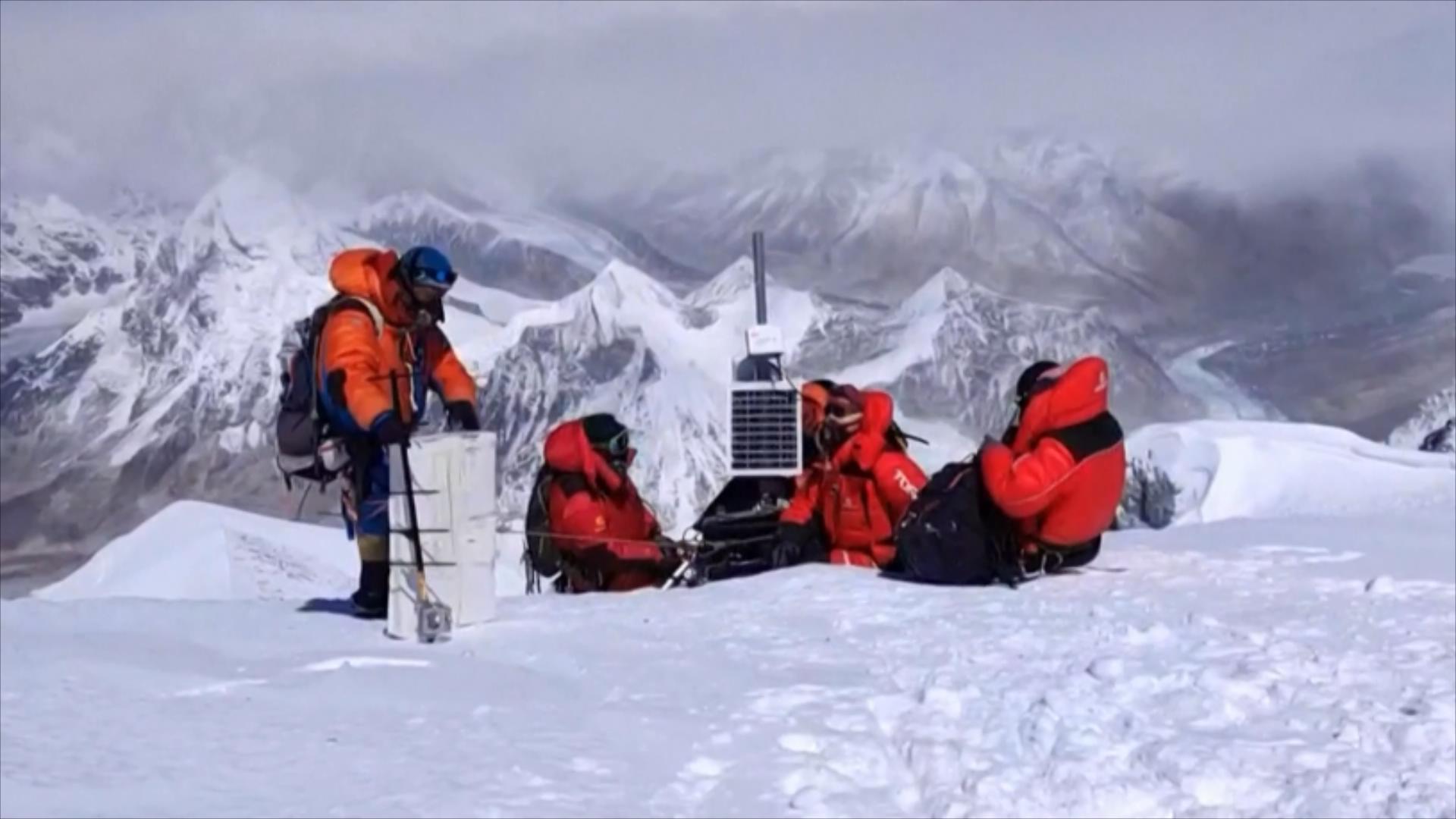

Scientists collect samples in the Xizang Autonomous Region, southwest China. /CMG
Chinese and international researchers have been continuing with their second scientific expedition to the Qinghai-Xizang Plateau over the past eight years, with part of their efforts focused on the study of glacier ice cores that hold significant clues about the Earth's climatic and environmental shifts.
China began its second scientific expedition to the Qinghai-Xizang Plateau in mid-2017 to study changes in climate, biodiversity and the environment over the past decades. Over the years, Chinese and international research teams have focused on studying plateau glaciers, climate change, biodiversity and ecological changes.
The Institute of Tibetan Plateau Research of the Chinese Academy of Sciences (CAS) in Lhasa, capital of southwest China's Xizang Autonomous Region currently houses ice core samples totaling 3,323 meters in length from 12 different glaciers on the Qinghai-Xizang Plateau.
Glacial ice cores are critical for studying the Earth's climatic and environmental changes, preserving a continuous record of how the planet's climate has evolved over millions of years.
"The thicker an ice core gets, the longer timeframe it spans. Moreover, its thickness could indicate the presence of ancient ice that could answer very important scientific questions about the evolution and origin of glaciers on the Qinghai-Xizang Plateau, and many more," said Xu Baiqing, deputy director of the institute.

Ice core samples collected in Xizang. /CMG
Over the eight years since the launch of the second expedition, Chinese and international scientists have collaborated to drill 20 major glaciers, collecting over 5,000 meters of ice cores.
"We hope to protect humanity's most valuable glacial resources as a part of world heritage. By observing changes at the source, we can recommend stronger and more effective conservation measures," said Yao Tandong, a member of the CAS and leader of the expedition.
"Glaciers here and glaciers all over the world where we study – it's the same story. I feel fortunate to be able to come back after 24 years. We try to keep focused on the science and the only way we can solve the climate change issues is working together. For climate change, I am absolutely convinced we can work together, and we can solve this problem," said Lonnie Thompson, a member of the U.S. National Academy of Sciences (NAS).
In recent years, both the Chinese central government and authorities in Xizang have attached great importance to ecological conservation on the plateau areas.
The Law of the People's Republic of China on Ecological Conservation on the Qinghai-Xizang Plateau took effect on September 1, 2023, followed by the Regulations of the Xizang Autonomous Region for Glacier Protections on October 1, 2024. The year 2025 has also been designated as the international year of glacier preservation.
"As this is the 'Roof of the World', establishing a national and even global model of ecological civilization is a major long-term goal for the Qinghai-Xizang Plateau. We have collaborated with hundreds of scientists from dozens of countries, all contributing research that supports the construction of an ecological security barrier for the region," said Yao. (CGTN)

86-10-68597521 (day)
86-10-68597289 (night)

52 Sanlihe Rd., Xicheng District,
Beijing, China (100864)

